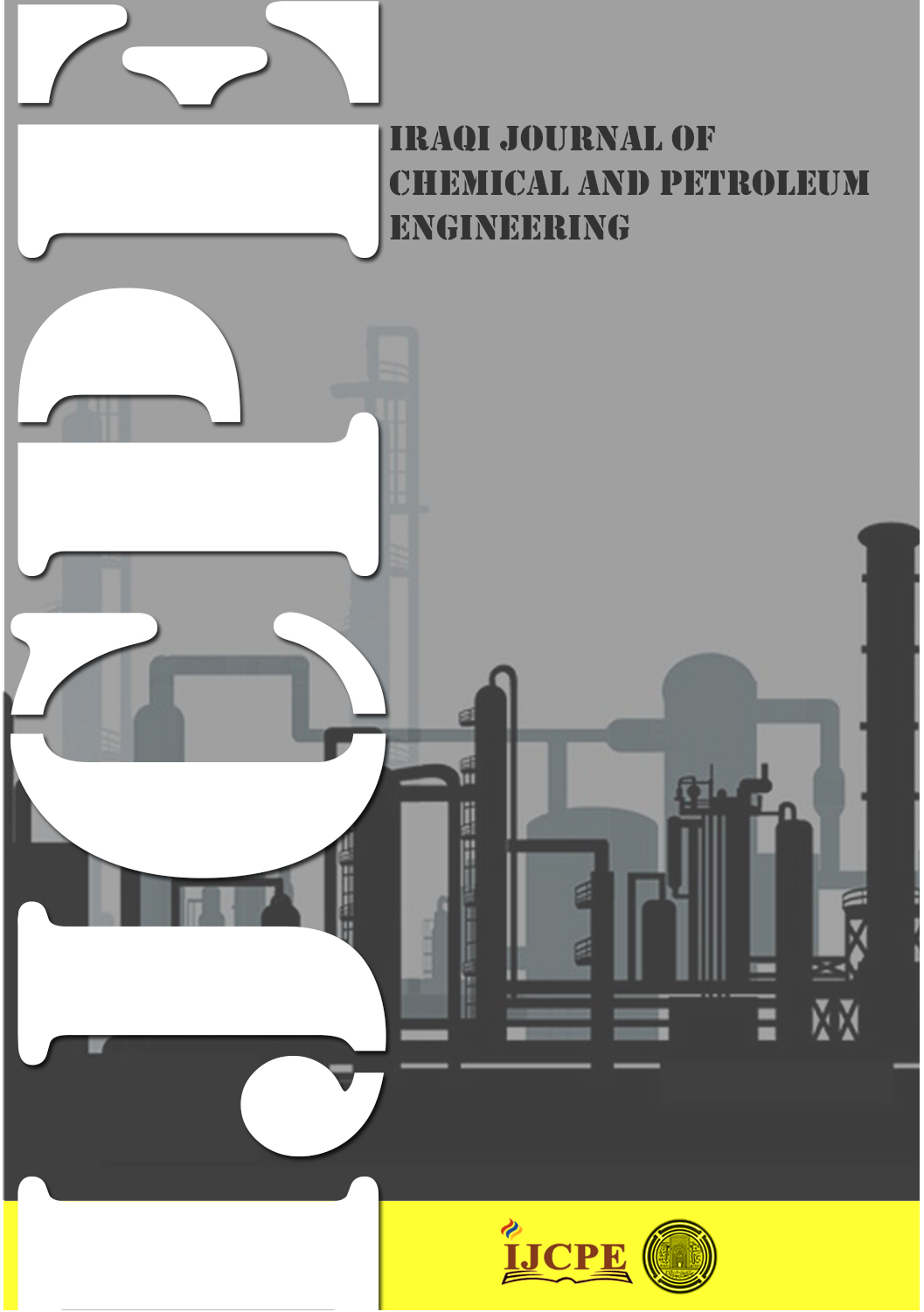Geomechanical modeling and wellbore stability analysis for studying the shale rock failure
DOI:
https://doi.org/10.31699/IJCPE.2025.1.4Keywords:
Wellbore stability; geomechanical analysis; shale rock failure; Mogi-Coulomb failure criterion; mud weight optimizationAbstract
Wellbore stability constitutes a critical challenge that can precipitate an escalation in non-productive time (NPT) during drilling operations, subsequently resulting in an increase in well expenditures and consequent revenue deficits. Shale formations exhibit a greater propensity than many geological formations to induce complications during the drilling process. Consequently, advanced geomechanical analyses were executed on select wells within the Zubair oilfield to clarify the fundamental causes of instability predominant in the field. In this study, the model was applied to two specific wells (ZB-A and ZB-B) to perform a wellbore stability assessment utilizing available well log data, which includes parameters such as bit size (BS), caliber (CAL), shear sonic logs (DTS), compressional sonic logs (DTC), and gamma ray (GR) logs. Laboratory-derived data in addition to the minimum horizontal stress that were refined using the leak-off test (LOT) measurements. The predicted formation pore pressures were calibrated against the pore pressure readings obtained from a repeated formation tester (RFT). The Mogi-Coulomb failure criteria were employed to ascertain the safe operating mud window requisite for balanced drilling, owing to the criterion's capacity to accommodate the intermediate principal stress (σ2). The proposed mud weight values, derived from the model, range from 1.32 g/cc to 1.45 g/cc, whereas a mud weight of 1.19 g/cc was utilized during the drilling operations. The findings of this research can be used as a guide to choose the best mud weight to solve problems related to wellbore instabilities in this field.
Received on 26/02/2023
Received in Revised Form on 16/05/2023
Accepted on 17/05/2023
Published on 30/03/2025
References
[1] Y. A. Khudhaier, F. S. Kadhim, and Y. K. Yousif, “Using Artificial Neural Network to Predict Rate of Penetration from Dynamic Elastic Properties in Nasiriya Oil Field,” Iraqi Journal of Chemical and Petroleum Engineering, vol. 21, no. 2, pp. 7–14, 2020, https://doi.org/10.31699/IJCPE.2020.2.2
[2] A. Salih and H. A. Abdul Hussein, “Artificial Intelligent Models for Detection and Prediction of Lost Circulation Events: A Review,” Iraqi Journal of Chemical and Petroleum Engineering, vol. 23, no. 4, pp. 81–90, 2022, https://doi.org/10.31699/IJCPE.2022.4.10
[3] J. B. Cheatham, “A new hypothesis to explain stability of borehole breakouts,” International Journal of Rock Mechanics and Mining Sciences & Geomechanics Abstracts, vol. 30, no. 7, pp. 1095–1101, 1993, https://doi.org/10.1016/0148-9062(93)90077-Q
[4] B. S. Aadnøy and R. Looyeh, Wellbore Instability Analysis. 2019. https://doi.org/10.1016/B978-0-12-815903-3.00012-1
[5] A. K. Faraj, H. Abdul, H. Abdul, and A. N. A. Al-hasnawi, “Estimation of Internal Friction Angle for The Third Section in Zubair Oil Field: A Comparison Study,” Iraqi Journal of Oil & Gas Research, vol. 2, no. 2, pp. 102–111, 2022. https://doi.org/10.55699/ijogr.2022.0202.1031
[6] L. Vernik and M. D. Zoback, “Estimation of Maximum Horizontal Principal Stress Magnitude From Stress-Induced Well Bore Breakouts in the Cajon Pass Scientific Research Borehole,” Journal of Geophysical Research: Solid Earth, vol. 97, pp. 5109–5119, 1992. https://doi.org/10.1029/91JB01673
[7] W. Al-Kattan and N. J. Al-Ameri, “Estimation of the Rock Mechanical Properties Using Conventional Log Data in North Rumaila Field,” Iraqi Journal of Chemical and Petroleum Engineering, vol. 13, no. 4, pp. 27–33, 2012. https://doi.org/10.31699/IJCPE.2012.4.3
[8] F. Hadi, A. Eckert, and F. Almahdawi, “Real-time pore pressure prediction in depleted reservoirs using regression analysis and artificial neural networks,” SPE Middle East Oil and Gas Show and Conference, vol. 2019-March, 2019, https://doi.org/10.2118/194851-MS
[9] N. S. Al-Zubaidi and A. K. Al-Neeamy, “3D mechanical earth model for Zubair oilfield in southern Iraq,” Journal of Petroleum Exploration and Production Technology, vol. 10, no. 5, pp. 1729–1741, 2020, https://doi.org/10.1007/s13202-020-00863-y
[10] F. H. AlShibli and A. A. A. A. Alrazzaq, “Laboratory Testing and Evaluating of Shale Interaction with Mud for Tanuma Shale Formation in Southern Iraq,” Iraqi Journal of Chemical and Petroleum Engineering, vol. 23, no. 3, pp. 35–41, 2022, https://doi.org/10.31699/IJCPE.2022.3.5
[11] J. Yuan, K. Zhao, and Y. Feng, “Research on Wellbore Instability of Shale Formation in Extremely Complex Geo-Mechanical Environment,” Processes, vol. 10, no. 6, 2022, https://doi.org/10.3390/pr10061060
[12] M. K. Al-Jafar and M. H. Al-Jaberi, “Well logging and electrofacies of zubair formation for upper sandstone member in zubair oil field, southern Iraq,” IRAQI GEOLOGICAL JOURNAL, vol. 52, no. 1, pp. 101–124, 2019. https://doi.org/10.46717/igj.52.1.7Ms-2019-06-29
[13] B. A. Eaton, “The Equation for Geopressure Prediction from Well Logs,” Fall Meeting of the Society of Petroleum Engineers of AIME, 1975, https://doi.org/10.2118/5544-MS
[14] A. M. Abdulaziz, H. L. Abdulridha, A. S. A. Dahab, S. Alhussainy, and A. K. Abbas, “3D mechanical earth model for optimized wellbore stability, a case study from South of Iraq,” Journal of Petroleum Exploration and Production Technology, vol. 11, no. 9, pp. 3409–3420, 2021, https://doi.org/10.1007/s13202-021-01255-6
[15] M. Aman, D. N. Espinoza, A. G. Ilgen, J. R. Major, P. Eichhubl, and T. A. Dewers, “CO2-induced chemo-mechanical alteration in reservoir rocks assessed via batch reaction experiments and scratch testing,” Greenhouse Gases: Science and Technology, vol. 8, no. 1, pp. 133–149, 2018, https://doi.org/10.1002/ghg.1726
[16] H. Q. Mohammed, “Geomechanical analysis of the wellbore instability problems in Nahr Umr Formation southern Iraq,” 2017.
[17] J. Zahiri, M. Abdideh and E. G. Golab, “Determination of safe mud weight window based on well logging data using artificial intelligence,” Geosystem Engineering, Vol. 22, 2019, https://doi.org/10.1080/12269328.2018.1504697
[18] A. Darvishpour, M. Cheraghi Seifabad, D. A. Wood, And H. Ghorbani, “Wellbore stability analysis to determine the safe mud weight window for sandstone layers,” Petroleum Exploration and Development, vol. 46, no. 5, pp. 1031–1038, 2019, https://doi.org/10.1016/S1876-3804(19)60260-0
[19] R. Gholami, A. Moradzadeh, V. Rasouli, and J. Hanachi, “Practical application of failure criteria in determining safe mud weight windows in drilling operations,” Journal of Rock Mechanics and Geotechnical Engineering, vol. 6, no. 1, pp. 13–25, 2014, https://doi.org/10.1016/j.jrmge.2013.11.002
Downloads
Published
Issue
Section
License
Copyright (c) 2025 The Author(s). Published by College of Engineering, University of Baghdad.

This work is licensed under a Creative Commons Attribution 4.0 International License.













